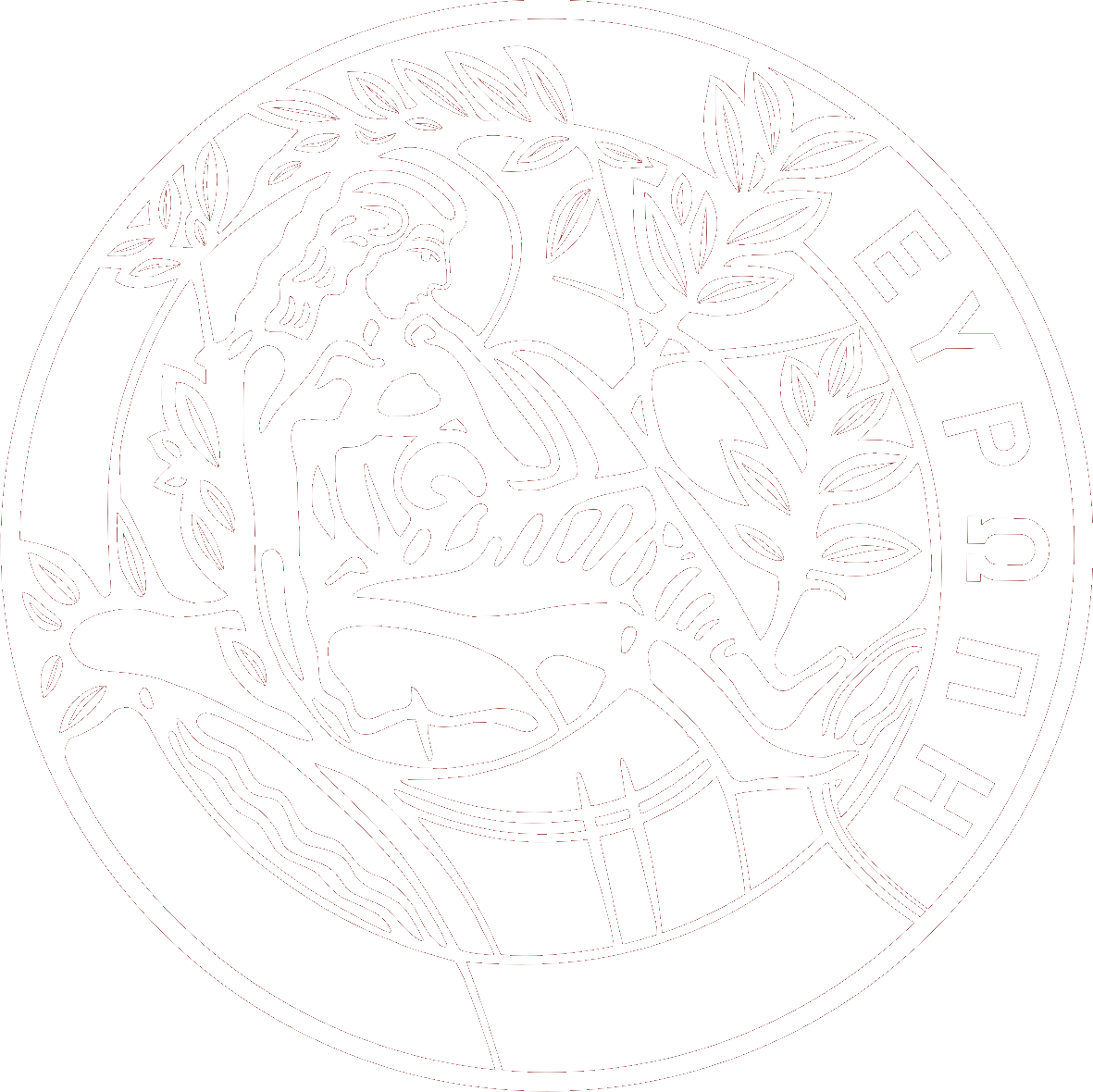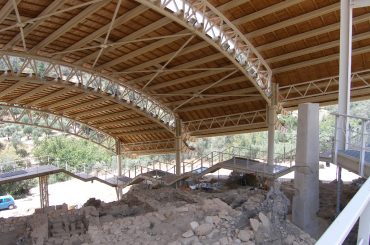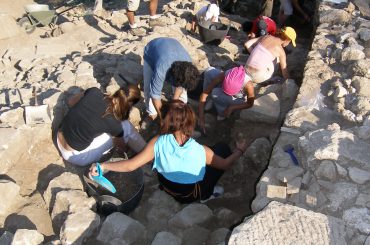Eleutherna, Sector III (1985-)
Τhe archaeological excavation at the ancient Eleftherna site, West Section III, under the supervision of Nikolaos Stabolides, Professor of Classical Archaeology, started in 1985 (along with those in Sections I and II) on the West slope of Prines hill (ancient Eleftherna) and expanded onto the East slope of the Eleftherna hill as well as the quarry of Peristeres over the next few years.
Main activity was centered on the site of Orthi Petra (standing stone) as well as other sites like Xeniana, Pigaidaki and Saini.
At the Orthi Petra site, archaeological activity has led to the discovery of parts of the Hellenistic and Roman city, mainly building foundations, houses and paved roads, movables and other finds from the Late Antiquity and Early Christian Period.
However, the most significant discovery at the same site is that of a cemetery from the Geometric/Archaic Period (from the beginning of the 9th century B.C to the Archaic Period) in which three different burial practices have been observed in the last few years: cremation, inhumation in pithos or amphora, and simple inhumation.
Cremation appears to be the most important burial practice, connected also with the discovery of lush funerary gifts. Cremation frequently brings to mind the burial practice described by Homer in the rhapsodies of Epic. A big number of cremations, both individual and in crematoriums, have been unearthed so far, while their funerary gifts that are made of various materials (such as clay, gold, bronze, silver, ivory, glass or faience) reveal a lot about the direct or indirect affinities of Eleftherna with other cities and places of Crete, as well as its relations with cities of the Aegean, Rhodes, Minor Asia, Cyprus and Near East.


